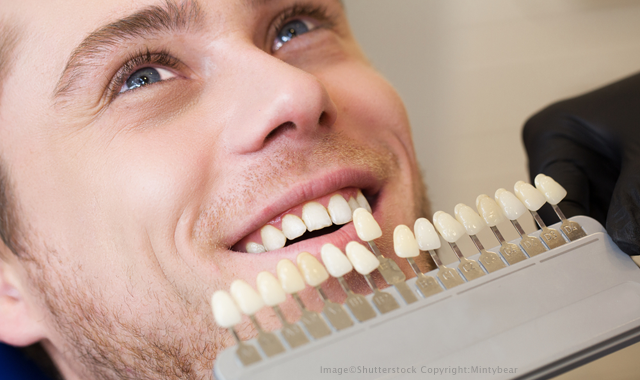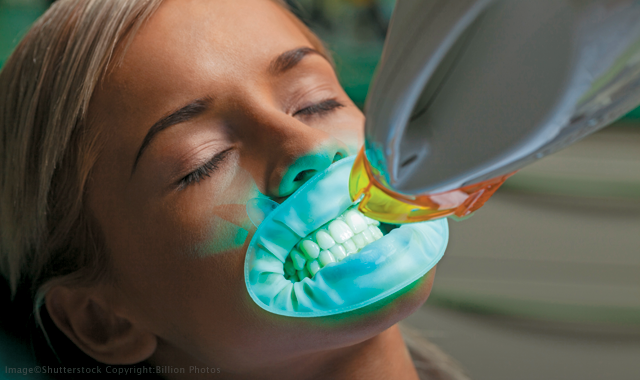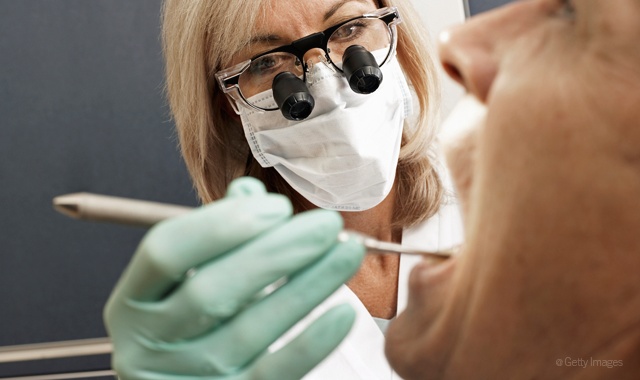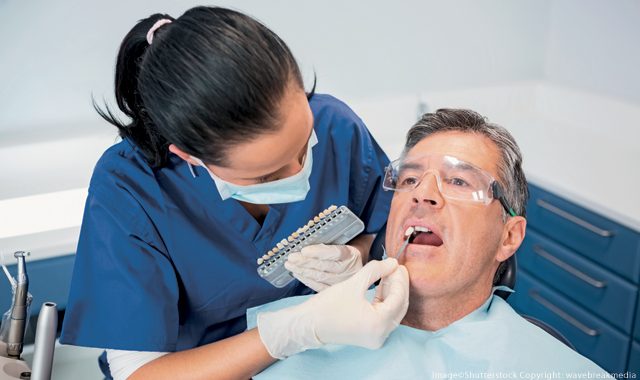6 most common cosmetic dentistry mistakes — and how to avoid them
While these rookie mistakes are easy to make, they’re avoidable so long as dentists have the right resources.
When first starting out as a cosmetic dentist, it can be easy to get excited about a case and its possibilities and get swept away. A result is that dentists often take on too much too soon, or they sign on to do cases that need more than just a cosmetic touch.

Read more: 4 easy ways to get into cosmetic dentistry
To avoid making some rookie mistakes, check out this list of the six most common mistakes made in cosmetic dentistry, as told by fellows and accredited members of the American Academy of Cosmetic Dentistry.
Click through the slides to view the mistakes.


Mistake #1: Taking on too much too soon
The first mistake many dentists make is taking on too much too soon.
“The first mistake is tackling a case that’s too big at the beginning,” says Fred H. Peck, DDS, AAACD. “You get lost. You’re not sure what direction to go because there are too many ancillary problems that the patient may have, such as occlusal issues, periodontal problems, and orthodontic concerns.”
Related reading: Why cosmetic dentistry matters to every practice
He advises breaking the case down and seeking out experts for guidance. If there are periodontal issues, talk to a periodontist. If the teeth are in the wrong position, connect with an orthodontist. Using specialists to their advantage will help newer cosmetic dentists break down the case into easier components.
“There are also a lot of dentists that will act as mentors to dentists that are newer to cosmetic dentistry,” Dr. Peck says. “They just have to reach out to those dentists for help.”



Mistake #2: Overpromising
Likewise, overpromising is a common mistake that dentists make early on. That’s why it’s important for dentists to make sure they’re on the same page as their patients in terms of their expectations.
More from the author: The clinical procedure that can make or break your career
“You always have to make sure that you have a great line of communication as well as the skill to meet the patient’s expectations,” says John Rowe, DDS, AAACD. “If their expectations are unreasonable or don’t meet the ability that you can deliver, then the end result will be an unhappy patient, and that leads to stress for both the practitioner and the patient.”
Before accepting a case or doing any treatment planning, make sure you understand what the patient’s end goal is - and don’t promise a result without offering diagnosis first.



Mistake #3: Not establishing a diagnosis for the patient
That brings us to the next mistake: not establishing a diagnosis for the patient.
Trending article: Are you a facial estheticsodontist?
“At a certain point we become so excited about what we can do to enhance the patient's appearance that our enthusiasm can cause us to gloss over diagnosing and evaluating the patient comprehensively,” says Betsy Bakeman, DDS, FAACD.
Before diving in, think about why the teeth look the way they do. Are stains a result of tetracycline or defective restorations? Why do certain teeth have areas of chipping? Why is the gingiva inflamed? Dr. Bakeman argues that not addressing the causes of certain problems leaves room for those to negatively impact the future of the restorations placed.



Mistake #4: Ignoring the tissue
Dr. Bakeman adds that, because most of dentists’ training is devoted to teeth, they sometimes forget to look at the influence of the gum tissue.
More from the author: The evolution of cosmetic dentistry
“It is important to look at tissue heights and contours,” she says. “Sometimes a beautiful job is done restoring the teeth, but the gum heights are uneven, which is distracting and non-esthetic and most likely could have been addressed as part of the treatment.”
Dr. Bakeman says that understanding the line angles and contours of the gingiva and the teeth is what makes the difference between a mediocre and a beautiful outcome.



Mistake #5: Not digitally planning a case
Many mistakes are the result of not enough planning, which is why many of the doctors interviewed in this article spoke about treatment planning at length.
“A lot of times, the dentists do not get as involved in the actual planning or fabrication of the restorations,” says John F. Weston DDS, FAACD. “There is a tendency to just prep the teeth the same way as all the other cases, take impressions, send the case to the lab and tell them to ‘make veneers.’”
Dr. Weston adds that dentists who practice this way end up with patient smiles that look the same because the lab is building them the same way. Unlike the dentist, the lab doesn’t have access to the patient’s features and can’t modify a case to best suit that patient. The end result is something “random” that may or may not satisfy the patient.
Trending research: Can tooth loss lead to cardiovascular disease?
To avoid giving patients Chiclet teeth, dentists have to find a way to send the patient to the lab. Luckily, that’s easy to do with digital photography and digital planning, which allow a clinician to get a more personal fit for the patient, Weston says.
“When using digital planning, you are able to try in a version of what you’re planning with plastic or temporary material,” he explains. “You need to get things in the mouth first, get approval from the patient and test out what you’re trying to achieve so you can make changes. This information can then be transferred to the lab. You’ve already tried this in and you know what you want the permanents to look like.”
He adds that the labs appreciate having more information and that it helps make the case more predictable - a win-win-win scenario for the doctor, patient and lab.
“Sometimes those steps are skipped and then the outcome is unpredictable and nobody’s happy,” Dr. Peck says. “If you do the steps in the right order, everything is predictable. You and the patient can predict what it’s going to look like before the treatment is ever started.”



Mistake #6: Not getting the shade right
When placing a single unit in the esthetic zone, it’s absolutely essential to have good shade photos or a good technician for custom shade. Some dentists try to circumvent the problem of matching shade by placing multiple restorations instead.
Read more: 4 biggest challenges of veneers - and how to solve them
“A single-unit in the esthetic zone is very complicated, but doing multiple units to make sure your restoration matches can be overtreatment as well,” says Sarah Jebreil, DDS, AAACD. “You have to make sure that you equip yourself with the proper tools and always do what you would want in your mouth.”



How to avoid these mistakes
Offering high-quality care and showing that patients are heard is a great way to ensure personal referrals. While these rookie mistakes are easy to make, they’re avoidable so long as dentists have the right resources: proper education, the correct tools and knowledgeable mentors. All of these can be found through the AACD. To learn more, visit aacd.com.

Product Bites – January 19, 2024
January 19th 2024Product Bites makes sure you don't miss the next innovation for your practice. This week's Product Bites podcast features new launches from Adravision, Formlabs, Owandy Radiology, Henry Schein Orthodontics, Dental Creations, and Dental Blue Box. [5 Minutes]
Product Bites – January 12, 2024
January 12th 2024The weekly new products podcast from Dental Products Report is back. With a quick look at all of the newest dental product launches, Product Bites makes sure you don't miss the next innovation for your practice. This week's Product Bites podcast features new launches from Videa Health and DentalXChange.